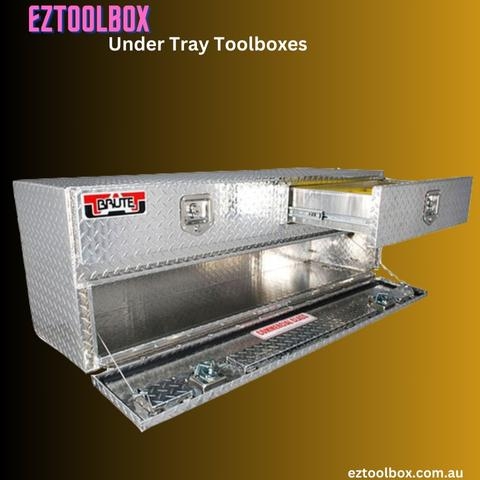Under tray toolboxes are an essential addition to any vehicle, especially for professionals or enthusiasts who need easy access to tools and equipment on the go. These toolboxes are designed to maximize space and efficiency, offering a convenient storage solution without compromising vehicle functionality. In this guide, we'll explore the benefits of Under Tray Toolboxes and provide a detailed overview of how to choose, install, and utilize them effectively.
Choosing the Right Toolbox: Before purchasing an under tray toolbox, consider the following factors:
- Size: Measure the space available under your vehicle to ensure compatibility with the toolbox dimensions.
- Material: Opt for sturdy materials like aluminum or steel for durability and resistance to rust and corrosion.
- Locking Mechanism: Choose toolboxes with secure locking mechanisms to safeguard your tools against theft.
- Weather Resistance: Look for toolboxes with weatherproof seals to protect your tools from moisture and debris.
- Accessibility: Consider whether you need single or dual opening toolboxes for easy access to your tools.
Installation Process: Once you've selected the right toolbox, follow these steps to install it securely:
- Gather the necessary tools and equipment, including mounting brackets, bolts, and a drill.
- Position the toolbox under the vehicle, ensuring it is centered and aligned with the mounting points.
- Use a marker to outline the locations for drilling holes on the vehicle's chassis.
- Drill pilot holes at the marked points, then secure the mounting brackets using bolts and washers.
- Place the toolbox onto the mounting brackets and secure it tightly using the provided hardware.
- Test the toolbox for stability and adjust if necessary.
Utilizing Under Tray Toolboxes: Under Tray Toolboxes offer versatile storage solutions for a variety of tools and equipment. Here are some tips for maximizing their efficiency:
- Organize your tools systematically to optimize space and facilitate easy access.
- Use dividers or trays to separate different types of tools and prevent them from shifting during transit.
- Regularly inspect and maintain your toolbox to ensure it remains in good condition and free from damage.
- Consider adding lighting or reflective tape to improve visibility, especially when accessing your toolbox at night or in low-light conditions.
- Utilize the space efficiently by storing commonly used tools in easily accessible locations.
Conclusion: Under Tray Toolboxes are invaluable accessories for professionals and enthusiasts who require convenient storage solutions for their tools and equipment. By choosing the right toolbox, installing it correctly, and utilizing it efficiently, you can maximize space and efficiency while ensuring your tools are always within reach when you need them most.


